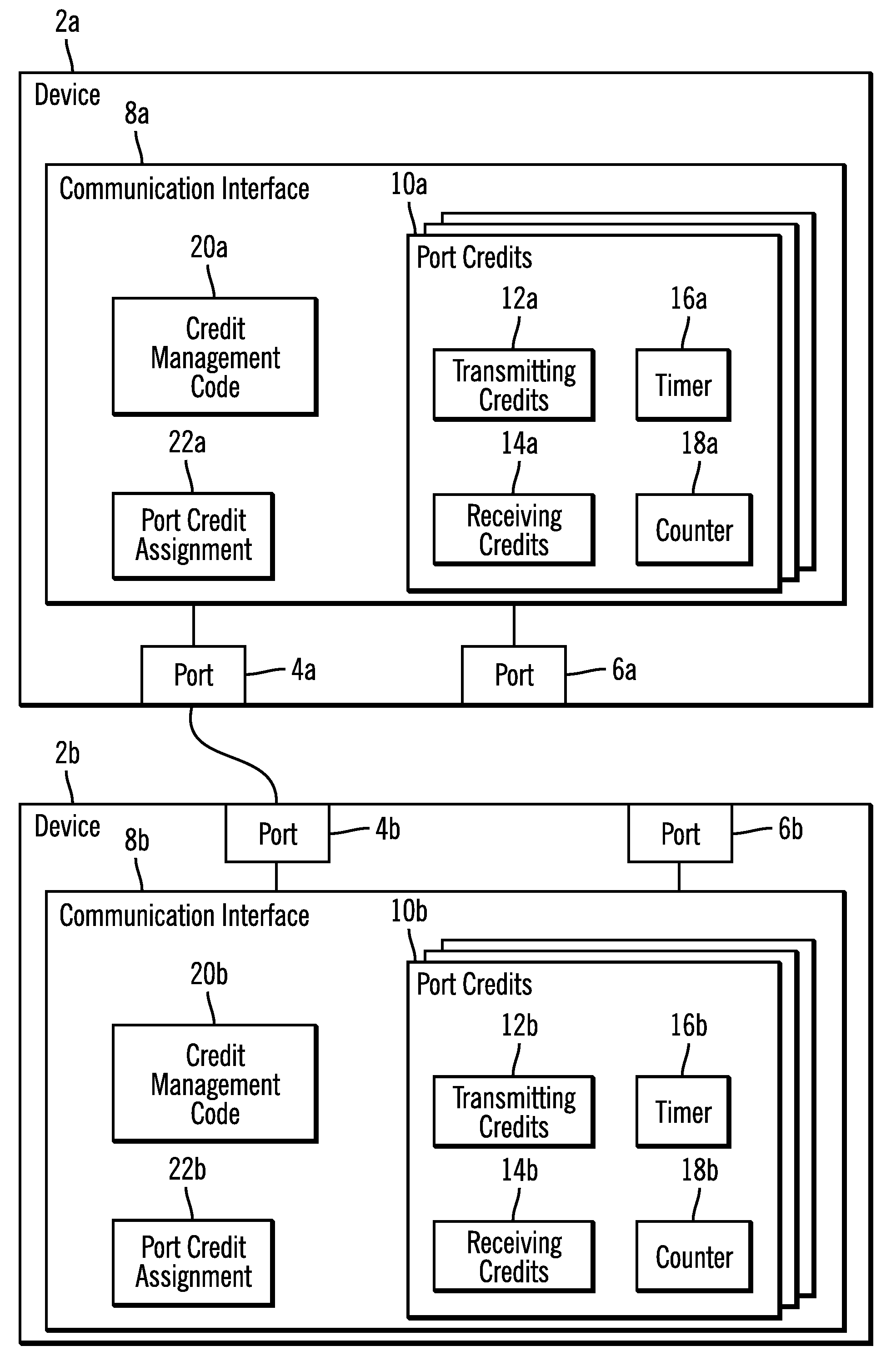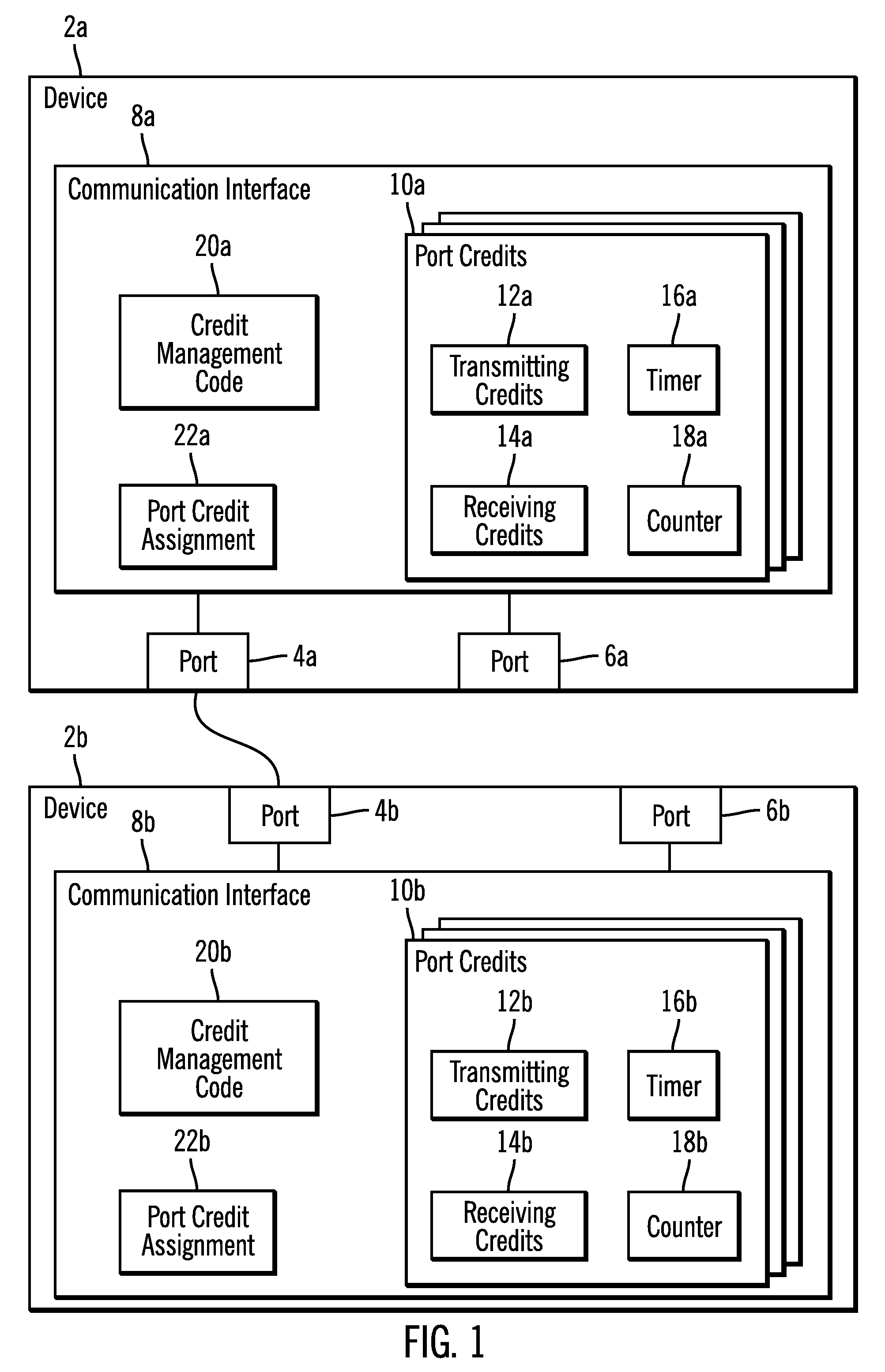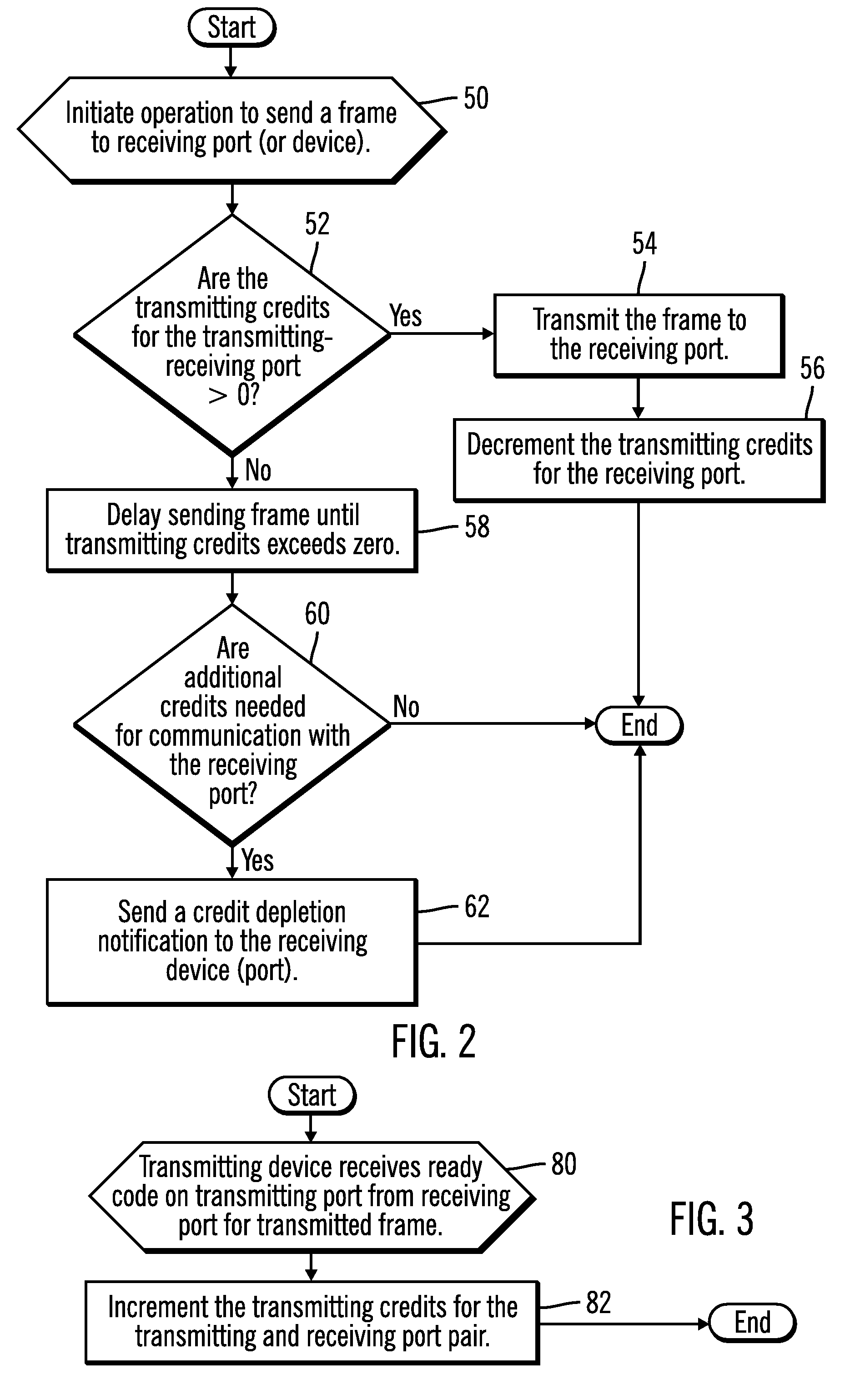Performing a recovery action in response to a credit depletion notification
a recovery action and credit technology, applied in the field of recovery actions in response to credit depletion notifications, can solve the problems of credit being used faster than it can be replenished, preventing the transmitting port from receiving, and consuming credit at times
- Summary
- Abstract
- Description
- Claims
- Application Information
AI Technical Summary
Problems solved by technology
Method used
Image
Examples
embodiment details
ADDITIONAL EMBODIMENT DETAILS
[0032]The described operations may be implemented as a method, apparatus or article of manufacture using standard programming and / or engineering techniques to produce software, firmware, hardware, or any combination thereof. The described operations may be implemented as code maintained in a “computer readable medium”, where a processor may read and execute the code from the computer readable medium. A computer readable medium may comprise media such as magnetic storage medium (e.g., hard disk drives, floppy disks, tape, etc.), optical storage (CD-ROMs, DVDs, optical disks, etc.), volatile and non-volatile memory devices (e.g., EEPROMs, ROMs, PROMs, RAMs, DRAMs, SRAMs, Flash Memory, firmware, programmable logic, etc.), etc. The code implementing the described operations may further be implemented in hardware logic in a hardware device (e.g., an integrated circuit chip, Programmable Gate Array (PGA), Application Specific Integrated Circuit (ASIC), etc.). ...
PUM
 Login to View More
Login to View More Abstract
Description
Claims
Application Information
 Login to View More
Login to View More - R&D
- Intellectual Property
- Life Sciences
- Materials
- Tech Scout
- Unparalleled Data Quality
- Higher Quality Content
- 60% Fewer Hallucinations
Browse by: Latest US Patents, China's latest patents, Technical Efficacy Thesaurus, Application Domain, Technology Topic, Popular Technical Reports.
© 2025 PatSnap. All rights reserved.Legal|Privacy policy|Modern Slavery Act Transparency Statement|Sitemap|About US| Contact US: help@patsnap.com



